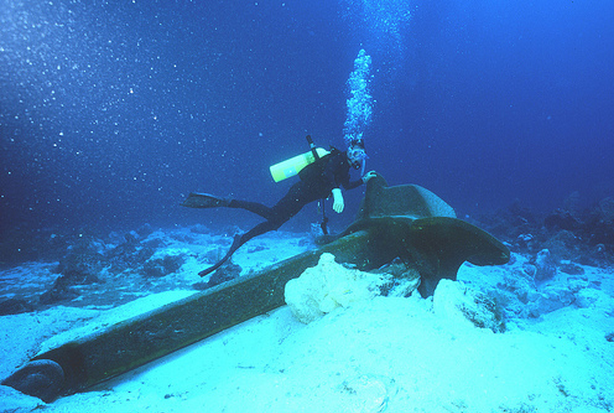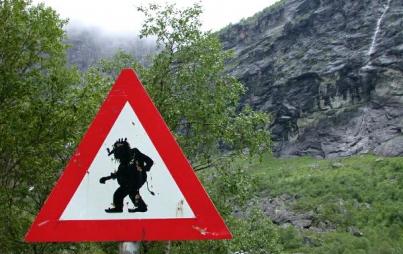
thetechjournal.com
When many of us think of the Internet we often imagine invisible, floating clouds of data wafting from our laptops or cell phones, landing in a satellite spinning through space, only to be beamed back to us with a miraculous "ding" and a comment on our Facebook statuses.
If that's an apt vision of how you've envisioned the inner workings of the World Wide Web, prepare to have your mind blown—because it turns out at least 95% of our Internet communications are actually transported via underwater cables—many of which are no wider than your garden hose.
(Turns out that Clooney's line in the opening of Gravity, "Half of North America just lost their Facebook," after a wave of space debris annihilates a series of satellites wasn't only eye roll-worthy, but apparently totally inaccurate. Hollywood gets their facts wrong?! Say it ain't so!)
Even more mystifying is that these cables (in one form or another) have been in existence for over a hundred years, encompassing a fascinating history including everything from tangled sea life to espionage. Telegeography—a leading telecommunications market research firm—claims there are 277 of these fiber optic underwater cables connecting the globe today, carrying 99% of international communication, including phone calls and Internet.
Just how does this process work, you ask?
In short, phone and internet data is routed to web companies' servers, to be relayed from those locations via cable to vast nooks of the world. Transferring communication via satellite is actually a far less efficient (and much more expensive) option, but submarine cables (often buried no more than 18 inches beneath the sea bed) involve a laundry list of complications, perhaps the most nerve-wracking being the potential for digital terrorism and the total wipeout of global communication if physical connections are severed. Additionally, the tapping of these wires has been going on since the Cold War—not that these efforts are always intended for the "enemy" of the hour; NSA documents leaked by Edward Snowden revealed massive surveillance on ordinary citizens as well.
Underwater cable as a topic of national security interest was kickstarted by the U.S. with 1971's Operation Ivy Bells, in which the USS Halibut (under the collaborative direction of the NSA, CIA, and U.S. Navy) powered into the Sea of Okhotsk. The submarine navigated Russian patrols in search of cable, installing a tap once located. For a decade, this data was collected each year by the U.S., until Ronald Pelton, an NSA employee, sold said secret to the KGB (he's still serving out his life sentence in Allenwood, PA).
With the method of global communication being relatively accessible, it's entirely possible that a massive digital blackout can occur. And has. A 2006 earthquake in Taiwan cut off 80% of the country's cables, wiping out half of Hong Kong's internet capability and China's access to foreign websites. In 2011, an elderly woman accidentally snipped cables owned by Georgian Railway Telecom, leaving 90% of Armenia with no internet access for 12 hours. With these incidents in mind, it isn't too big a stretch to worry about intentional damage being inflicted upon our communication.
How to keep the ship sailing (relatively) smoothly
The International Telecommunications Union, a UN agency, manages to maintain international standards in cable protocol, even though the topic is inextricably riddled with politics. As all parties are dependent upon a smoothly-flowing digital web, it would seem reaching compromise isn't an option, but rather a requirement. The world economy is now heavily dependent upon the Internet for digital commerce—a 24-hour 2008 blackout in India cost the country $64 million after four cables connecting Egypt and Italy were severed.
Along with concerted efforts by Google and others to expand Internet access across the globe (70% of Africa has access to WiFi-enabled devices, but only 10% can be connected to the internet), beefing up security as well as diversifying routing locations are at the top of the priority list when it comes to the future of underwater cables. Security companies along with software developers are coupling together to work on physical as well as digital barriers to protect cables, and ever-evolving technology is being applied to increase efficiency.
But of course, all of this has us wondering, hearts and minds racing—what would life be like if the Internet evaporated from our fingertips following a natural or intentionally-caused blackout? Would we get to star in our own bastardized vision of Mad Max? I've always wanted to try a buzz cut . . .






